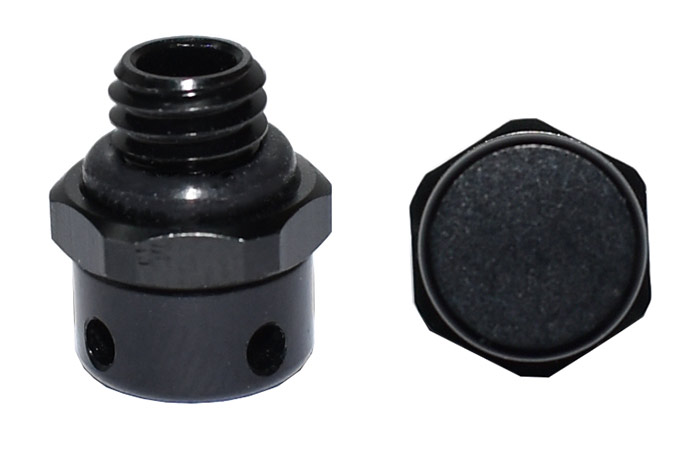Focus on PUW EPTFE Material Co., Ltd - Get to know the new information of the industry quickly!

2025-05-22 18:00:21
An Aluminum Breather Valve is a specialized mechanical device designed to regulate pressure and prevent contamination in enclosed systems such as gearboxes, hydraulic reservoirs, and industrial machinery. Constructed from high-grade aluminum alloys (e.g., 6061-T6 with tensile strength of 45,000 psi), these valves feature precision-engineered components to ensure reliable performance under varying operational conditions. Their lightweight yet durable design (typical weight: 0.5–2 kg depending on size) makes them ideal for applications where corrosion resistance (meeting ASTM B117 salt spray test standards for 500+ hours) and thermal conductivity (thermal conductivity of 167 W/m·K) are critical.

Pressure Regulation: Operates within a range of ±0.5 psi to ±2 psi (adjustable), with a cracking pressure accuracy of ±0.1 psi.
Filtration Efficiency: Integrated 5-micron particulate filter (99.5% efficiency per ISO 16890) with hydrophobic membrane for moisture resistance.
Temperature Range: Functions reliably from -40°C to +150°C, with silicone seals rated for 200°C intermittent exposure.
Flow Capacity: Airflow rates up to 25 L/min at 1 psi differential pressure (tested per ISO 6358).
Material Specifications: Anodized aluminum housing (hardness: 60–70 Rockwell B) with stainless steel springs (Grade 316, yield strength 30,000 psi).
Note: Advanced models may include pressure-vacuum relief mechanisms with dual-stage operation (e.g., vacuum relief at -0.3 psi, pressure relief at +1.5 psi) and optional PTFE membranes for chemical resistance.
Aluminum Breather Valves are deployed across industries where precise pressure management and contamination control are paramount:
Industrial Gearboxes: Prevents lubricant degradation by maintaining neutral pressure during thermal cycling (typical ΔT: 50–80°C).
Hydraulic Systems: Protects against particulate ingress in mobile equipment (meets ISO 4406 Class 14/12/9 cleanliness standards).
Transformer Cooling: Allows thermal expansion of dielectric fluids while excluding humidity (dew point suppression to -40°C).
Marine Equipment: Saltwater-resistant designs with duplex aluminum alloys (e.g., 5052-H32) for offshore applications.
Food Processing: NSF-certified models with electropolished surfaces (Ra ≤ 0.8 μm) for sanitary environments.
Proper maintenance ensures optimal performance and extends service life (typically 5–8 years under normal conditions):
Monthly visual checks for housing integrity (no cracks exceeding 0.5 mm per ASTM E290 bend test criteria).
Verify filter condition using differential pressure gauges (replace if ΔP exceeds 0.8 psi across the element).
Isolate the valve from the system and depressurize completely.
Ultrasonic clean aluminum components in a solution of 5% citric acid (40°C, 10 minutes) for oxidation removal.
Rinse with deionized water (conductivity < 5 μS/cm) and dry using nitrogen purge (20 psi, 30 seconds).
Replace filter elements annually or after 8,000 operating hours (whichever comes first).
Re-lubricate moving parts with perfluoropolyether (PFPE) grease every 2 years (applied at 0.1–0.3 g per valve).
Critical Tip: Always torque mounting bolts to manufacturer specifications (typically 8–12 N·m for M6 threads) using a calibrated wrench to prevent housing distortion.
| Symptom | Diagnosis | Corrective Action |
|---|---|---|
| Excessive pressure fluctuation (±1 psi) | Worn spring (free length reduced by >10%) | Replace spring assembly |
| Oil mist emission | Failed coalescing filter | Install new filter with ≥95% aerosol capture efficiency |
| Ice formation (-20°C environments) | Moisture accumulation | Upgrade to heated valve model (40W cartridge heater) |

Telephone: 0769-22850556
Email: lvch@puw-eptfe.com
Address: No.20, Wanjiang Industrial Street, Wanjiang District, Dongguan City, Guangdong Province, China
© 2025 PUW EPTFE Material Co., Ltd. All rights reserved.
Privacy policy | Terms and Conditions